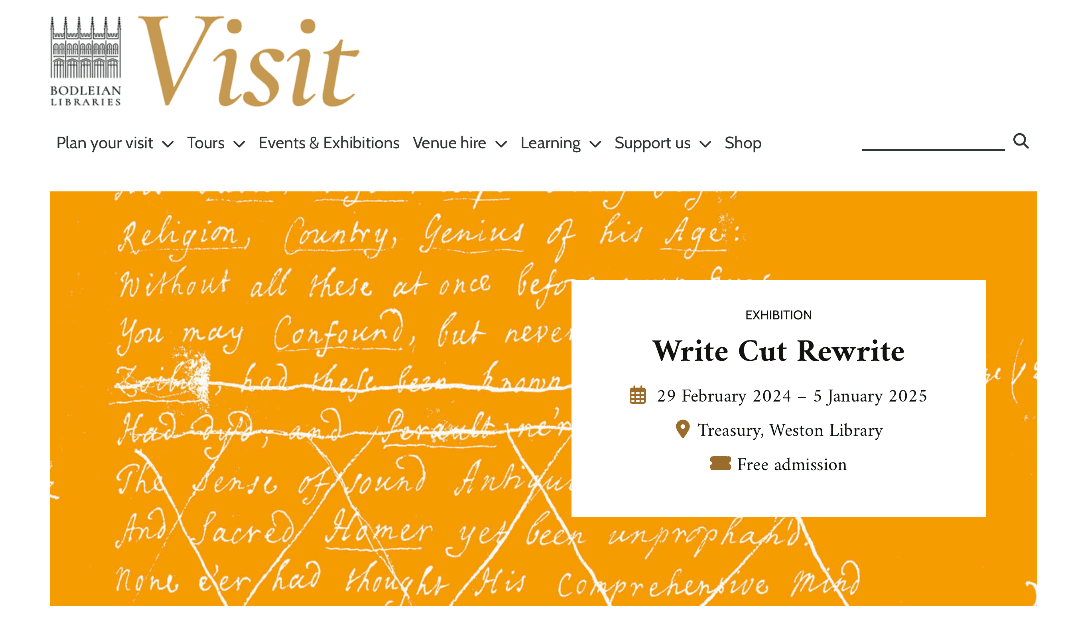I stayed in my college overnight on Friday, following the Aularean Golf Society AGM, and finally visited the exhibition Write Cut Rewrite at the Weston Library. There is something magical about seeing the handwritten manuscripts of great authors with their crossing out and insertions. As my main protagonist is Sir Anthony Standen, an Elizabethan spy, there was something special about seeing the handwritten edits of Ian Fleming and John Le Carré. The latter spent four months working on the first scene of Tinker Tailor Soldier Spy.
Claire has been reading the first draft of my work in progress, The Favourite Murder. I don’t envy her. Yesterday she said, “I don’t know who this man is? What’s his role in the story?” I took the folder from her and read it. Then picked up a pencil and started correcting some spelling and punctuation issues that Claire had missed. The issue that Claire had picked up was fairly clear to me, but I could also see her problem. It needs more work.
For the previous books I finished the first draft before giving it to Claire. But she has been so helpful that I felt that I wanted to carry her along the journey with me this time. I want to be able to check whether I’m hitting the theme in enough scenes, or overdoing it. Does each scene contribute to the story, or am I sticking too closely to historical events, and not progressing the story? The Favourite Murder spans quite a bit of history and many characters. I know War and Peace is a great book, but Claire has recently given up trying to read it. I want to keep my reader engaged.
As I learnt from Write Cut Rewrite, you have to get a first draft down before you can start rewriting it. You have to throw some clay on the table before you can start making a vase. Good books aren’t written, they’re rewritten.

